A visit to Nairobi Kenya. The highlights included a visit to the Kenya Railway Museum, The Elephant Orphanage, The Giraffe Centre, Karen Blixen’s House, visiting the City Market for lunch, wandering some of the cities streets to get a feel of the city and its people and the Nairobi National Museum.
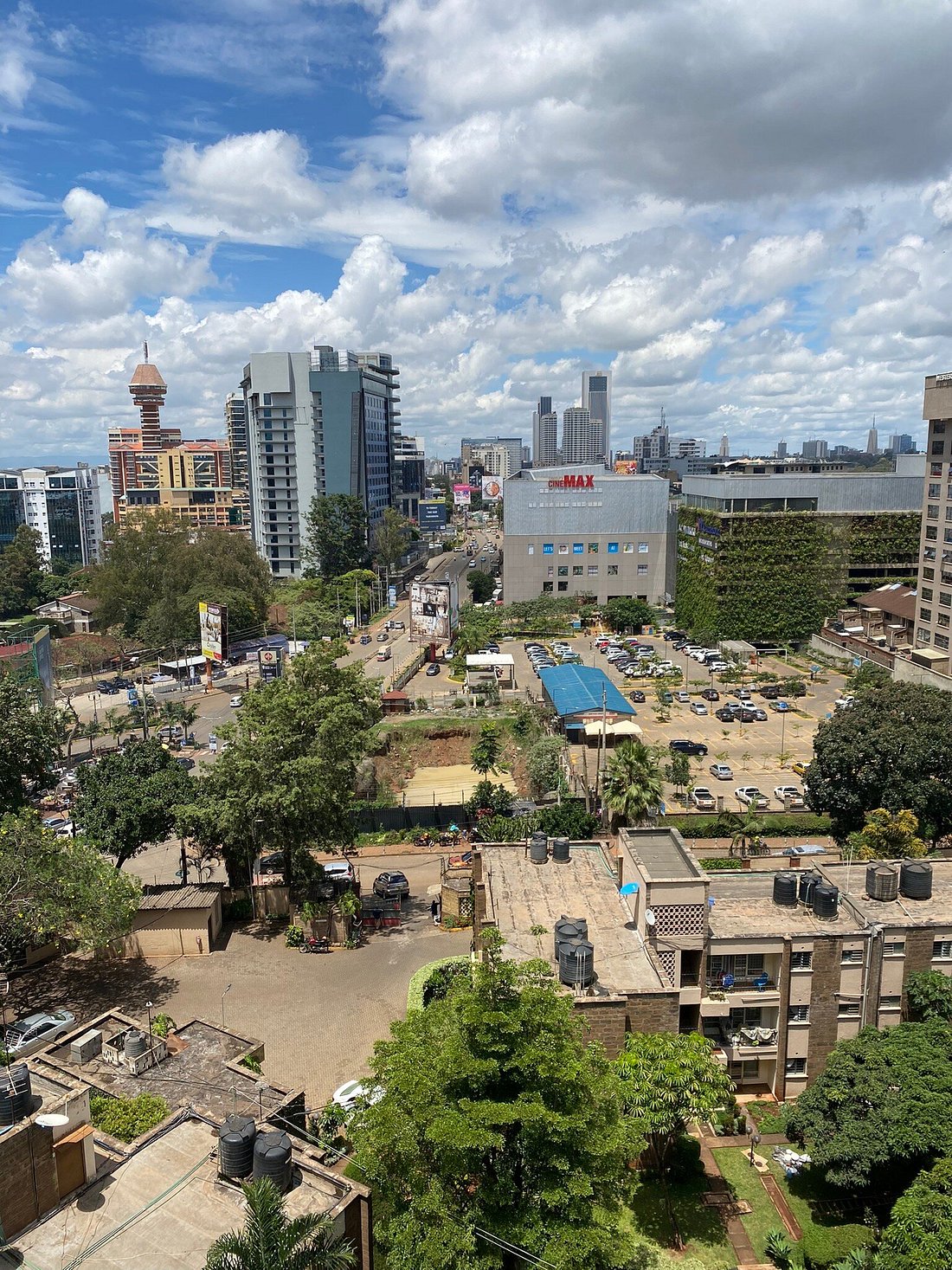
Our base while in Nairobi is the Bidwood Suites located in Westlands which is the commercial and entertainment hub of Nairobi and only a short walk to a shopping mall. This is also where we join 16 others tomorrow who are also here to visit the Rotary Projects at Nakuru Kenya but more on that in another post.
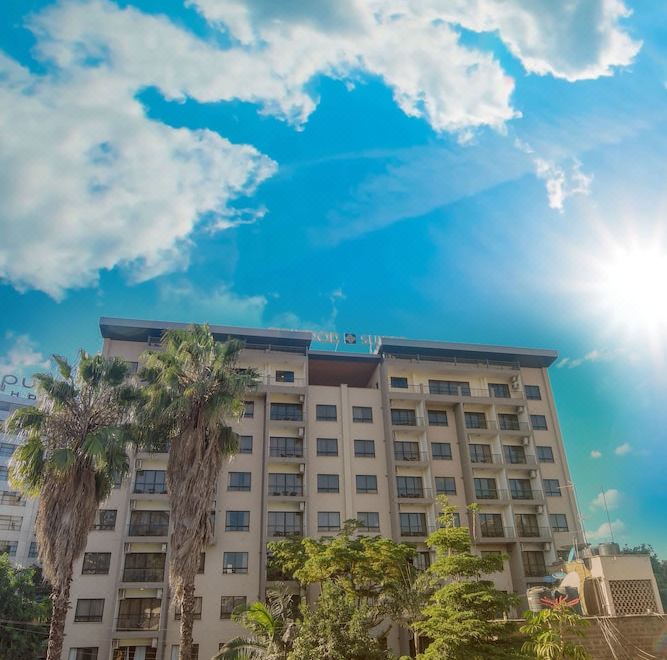
Two great ways to get around here are Uber and Bolt. Both ride share apps and rides are often only a couple on minutes away. Uber has the advantage of paying through the app and paypal. With Bolt you pay the driver cash but can be much cheaper.
Nairobi Railway Museum
We had some free time to fill in on our first day so we headed out to the Nairobi Railway Museum.
The Museum is owned by Kenya Railways and is the only Railway Museum in East and Central Africa. A quirky small museum that tells about the evolution of Kenya via building the railways. A variety of trains and memorabilia including the steam train used in the movie Out of Africa. A highlight for me was climbing all over the old steam trains. The guides are very knowledgeable and can give you a complete history of the railways.
M-Pesa

Be warned you cannot use cash or credit cards at the Museum and many other places here. To gain entry to the railway museum you need to pay using M-Pesa. M-Pesa is a mobile banking service that allows users to store and transfer money through their mobile phones. Pesa is Swahili for money. M-Pesa was introduced in Kenya as an alternative way for the population of the country to have access to financial services. If you are visiting Kenya obtaining a local sim card and an M-Pesa account soon after you arrive will make traveling here much easier. We obtained Safaricom sim in a shopping mall and set up M-Pesa at the same time. Having a local sim card and data also allows you arrange transport via Uber, bolt or a taxi using apps. We found this to be the best way to organise transport.
Nairobi City Market
We ordered an Uber to take us to our next stop the Maasai Markets. This did not quite work out as expected as our Uber driver took us to the Nairobi City Market by mistake. It made for an immersive experience as today it was all locals and not another tourist in sight.
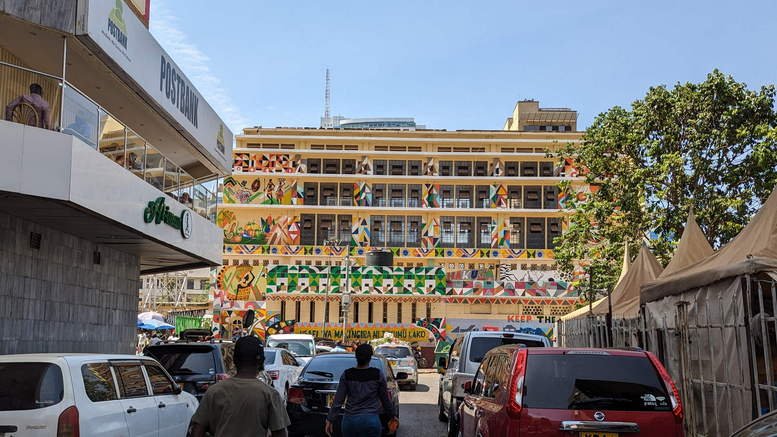
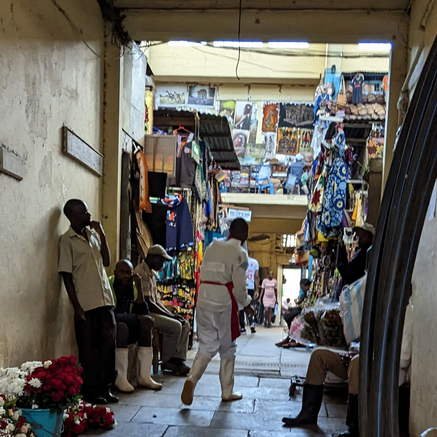
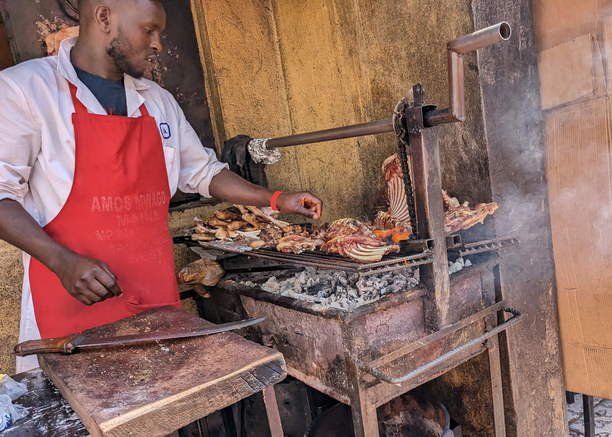
Not a big market but lots packed in here including souvenirs etc. The vendors are friendly and not overly aggressive in their sales pitches. You need to bargain so start low! The market building itself is interesting as it is an old airplane hanger, dating from the early days of aviation.

Lunch ended up being across the road at the Al-iman restaurant. A local upstairs restaurant opposite the market.
Nairobi National Museum
We decided to walk the couple of kilometres to where we thought the Maasai Markets were. If you like walking in new places and strange unfamiliar towns then walking in Nairobi gives you a wonderful sense of the place and how people go about their everyday lives.
We found the location of the Maasai Markets using google maps but no market. It has apparently been moved. So we walked some more streets for 3 km or so the Nairobi National Museum.
Located on museum hill the museum has a Cradle of human kind gallery; The Story of mammals; The History of Kenya; Cycles of life gallery; Numismatic exhibition and Asian African Heritage exhibition
The museum has a particularly good early man exhibit. Kenya is often called the ‘cradle of humanity’ or the ‘birthplace of humankind’ and the museum keeps the evidence to back up that claim.

Elephant Orphanage
We loved the elephant orphanage with all the baby Elephants enthusiastically appearing in a quick moving line to feeding enclosure. This was one of our ‘must see’ places in Nairobi. Most people are now aware of the damage poachers inflict on the elephant population.
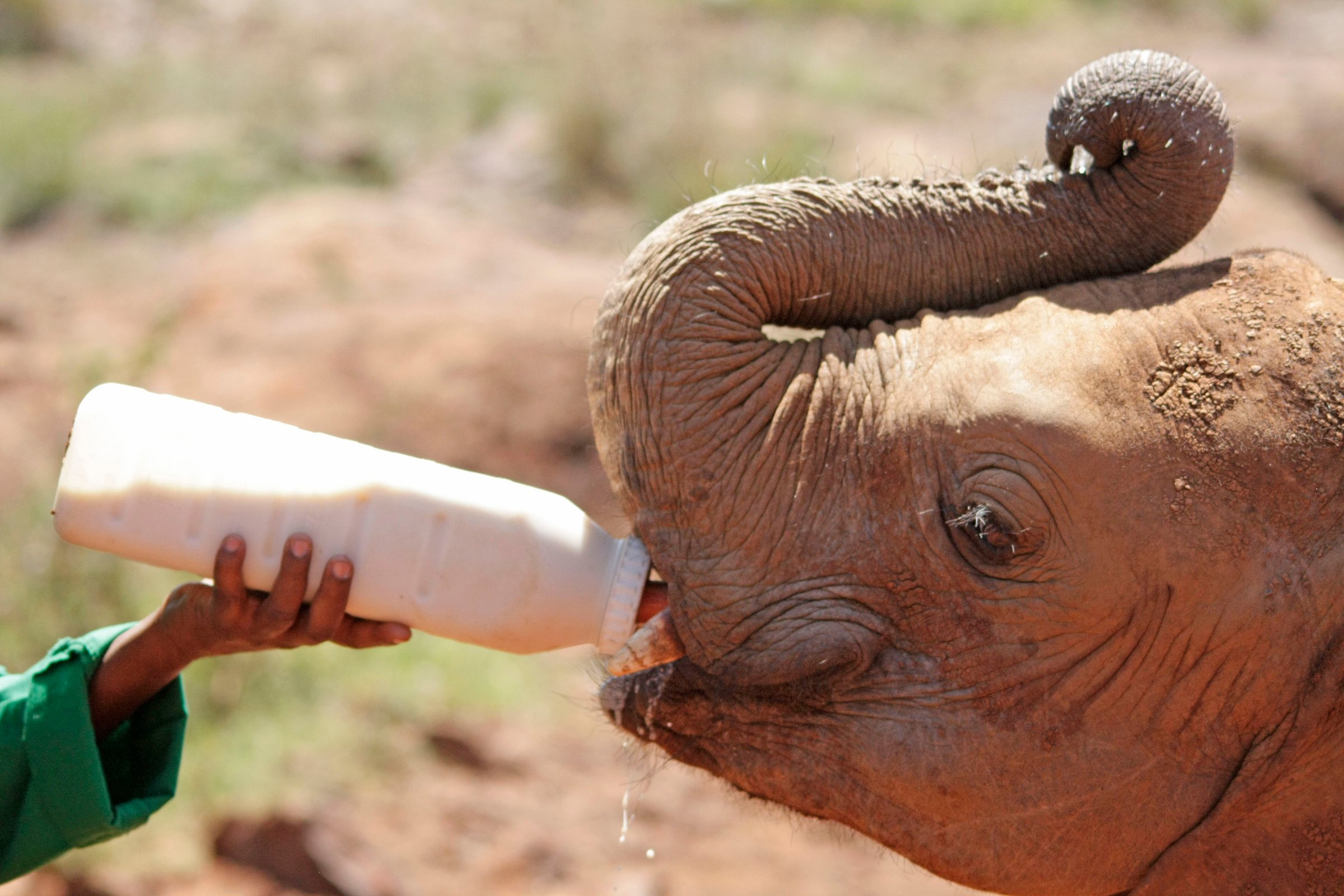
In an effort to save the baby elephants that are orphaned due to poacher’s attacks, the Elephant Orphanage is operated by the Sheldrick Wildlife Trust which takes charge of being their “adoptive mother” and taking care of them 24/7 – feeding them, making sure they are comfortable and playing with them.
The nursery provides the first stage in the hand-rearing and development of milk dependent baby elephants. Once they graduate from the Nursery, aged 2-3 years, the elephants move to one of the Reintegration Centres in Tsavo East National Park, from where they will ultimately return to the wild.
The Elephant Orphanage is in Nairobi National Park just 17 km south of the city of Nairobi.
Nairobi Giraffe Centre.
Just when we thought it could not get better we had the opportunity to feed the giraffes at the Nairobi Giraffe Centre. Amazing there long blue grey tongues are so gentle taking the food from your hands. The Giraffe Centre is currently home to s, seven female and three male. Six were born at the Centre, while four were translocated from different parks and nature conservancies across Kenya.
The African Fund for Endangered Wildlife Giraffe Centre – locally referred to as The Giraffe Centre – plays a pivotal role in conserving the critically endangered Rothschild giraffe (which differ from other giraffe subspecies as they have no patterning below the knee). Numbers were dwindling quickly due to habitat encroachment and mass hunting; before conservation initiatives began, approximately 100 Rothschild’s giraffes remained in the wild.
From the raised wooden structure (giraffe height), you can watch the giraffes up-close and hand feed them with pellets. You can drop the pellets onto their tongues where they collect them until there is enough to swallow. Thee are also warthogs sniffing around at the giraffe’s hooves for the fallen pellets.
The Giraffe Centre is located in Lang’ata, approximately 20 kilometres (12 mi) from the centre of Nairobi.
Karen Blixen’s House
Karen Blixen’s is quite famous for her time in Africa and her story is the movie Out of Africa (1987). Karen Blixen, authored the 1937 book Out of Africa which chronicles life at the estate and on which the movie is based.

My Sister is a fan of Karen Blixen’s classic memoir, “Out of Africa,” so it was a must do for us. The Karen Blixen museum located 10 km outside of Nairobi, at the foot of the Ngong Hills. It is is a large farmhouse where she lived and worked during her time in Kenya, and it provides a fascinating glimpse into her life and legacy.


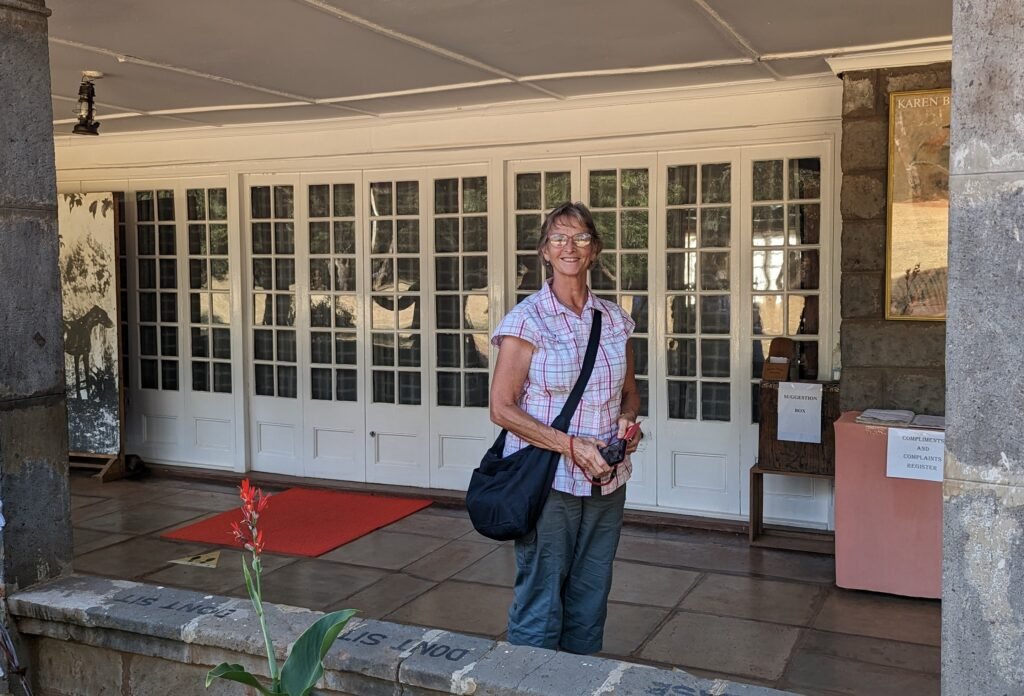
The museum features a range of artifacts and exhibits including photographs, original letters, and personal effects. The guide was knowledgeable and provided an insight into Karen’s life and put her life into historical context for the time which she lived here.
Built in 1912 by Swedish Engineer Ake Sjogren, Karen and her husband bought the house in 1917 and it became the farm house for their 6,000-acre farm, of which 600 acres was used for coffee farming. Much of the land is now the Nairobi suburb of ‘Karen’.
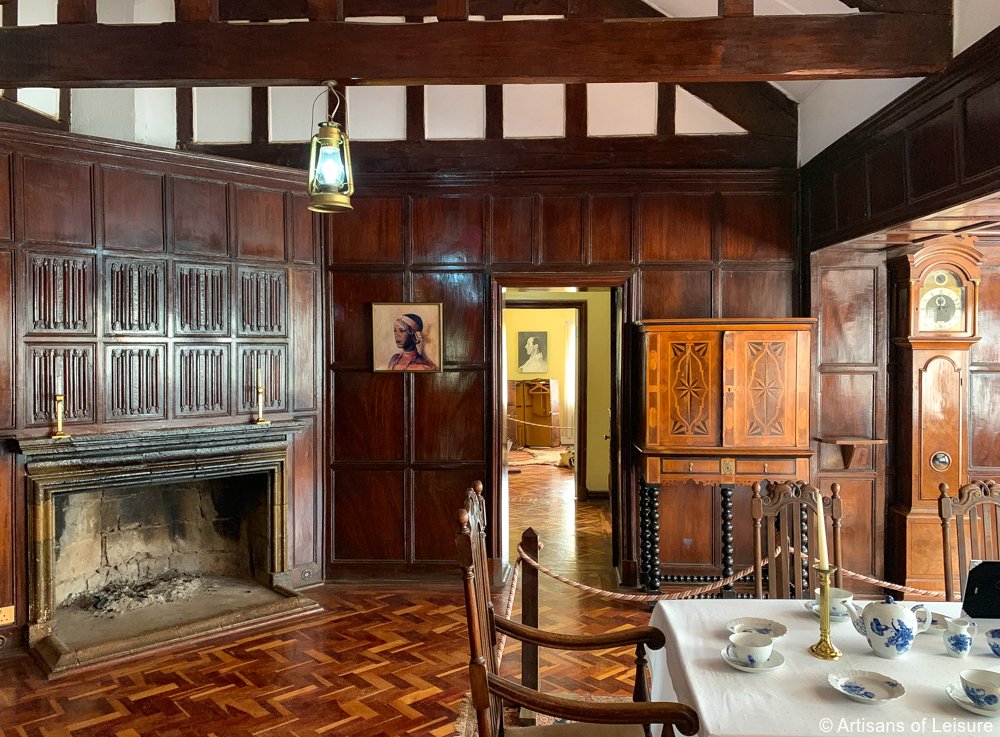
The gardens are also beautifully maintained, with colourful flowers and towering trees providing a serene and tranquil atmosphere. There is an onsite gift shop offers a range of books and souvenirs.
I have to watch the movie now!
Below is a slide show of some of the photos taken around Nairobi.

